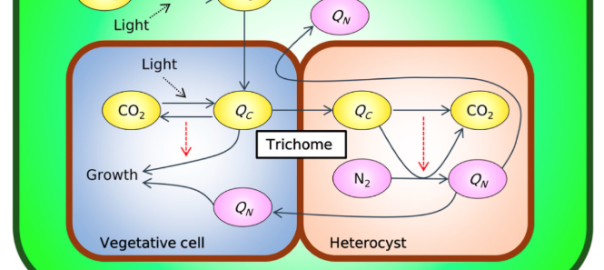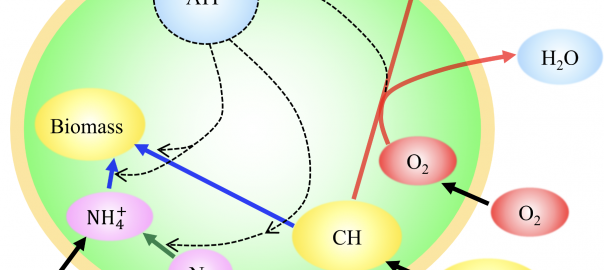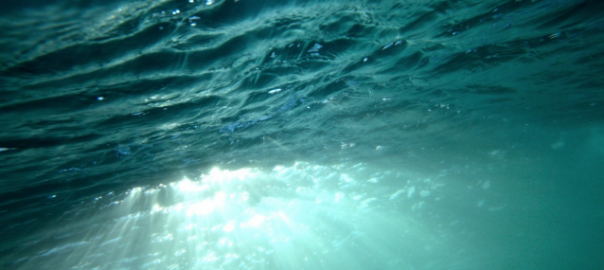Zhen Wu, Jincheng Li, Yanxin Sun, Josep Peñuelas, Jilin Huang, Jordi Sardans, Qingsong Jiang, Jacques C. Finlay, Gregory L. Britten, Michael J. Follows, Wei Gao, Boqiang Qin, Jinren Ni, Shouliang Huo & Yong Liu (2022), Imbalance of global nutrient cycles exacerbated by the greater retention of phosphorus over nitrogen in lakes, Nature Geosciences, doi: 10.1038/s41561-022-00958-7 Continue reading Imbalance of global nutrient cycles exacerbated by the greater retention of phosphorus over nitrogen in lakes
Category Archives: Nitrogen Fixation
Subhendu Chakraborty, Ken H. Andersen, André W. Visser, Keisuke Inomura, Michael J. Follows & Lasse Riemann (2021), Quantifying nitrogen fixation by heterotrophic bacteria in sinking marine particles, Nature Communications, doi: 10.1038/s41467-021-23875-6
Continue reading Quantifying nitrogen fixation by heterotrophic bacteria in sinking marine particles
Keisuke Inomura, Curtis Deutsch, Takako Masuda, Ondřej Prášil, Michael J. Follows (2020), Quantitative models of nitrogen-fixing organisms, Computational and Structural Biotechnology Journal, doi: 10.1016/j.csbj.2020.11.022 Continue reading Quantitative models of nitrogen-fixing organisms

Fellow Travelers
Observations suggest diazotrophs like Crocosphaera and Trichodesmium pay for their ability to fix nitrogen with a very low growth rate, yet diatom-diazotroph associations or DDAs exhibit high growth rates. CBIOMES postdoctoral fellow Chris Follett and co-authors use a cell flux model to test the hypothesis that diatom-diazotroph associations or DDAs grow faster than unpaired diazotrophs because the diatoms in DDAs provide organic carbon to their diazotroph guests that boost their growth rate. Continue reading Fellow Travelers
Keisuke Inomura, Christopher L. Follett, Takako Masuda, Meri Eichner, Ondřej Prášil and Curtis Deutsch (2020), Carbon Transfer from the Host Diatom Enables Fast Growth and High Rate of N2 Fixation by Symbiotic Heterocystous Cyanobacteria, Plants, doi: 10.3390/plants9020192 Continue reading Carbon Transfer from the Host Diatom Enables Fast Growth and High Rate of N2 Fixation by Symbiotic Heterocystous Cyanobacteria
Keisuke Inomura, Curtis Deutsch, Samuel T. Wilson, Takako Masuda, Evelyn Lawrenz, Bučinská Lenka, Roman Sobotka, Julia M. Gauglitz, Mak A. Saito, Ondřej Prášil, Michael J. Follows (2019), Quantifying Oxygen Management and Temperature and Light Dependencies of Nitrogen Fixation by Crocosphaera watsonii, mSphere, doi: 10.1128/mSphere.00531-19

A Model for Nitrogen Fixation in the Presence of Ammonium
Former MIT Darwin Group member Keisuke Inomura, working with MIT CBIOMES investigator Mick Follows, presents a new quantitative model of nitrogen fixation in the presence of ammonium. Continue reading A Model for Nitrogen Fixation in the Presence of Ammonium

Understanding Microbial Competition for Nitrogen
The Darwin Project’s Emily Zakem, Stephanie Dutkiewicz and Mick Follows show that physiological constraints and resource competition between phytoplankton and nitrifying microorganisms in the sunlit layer can yield this ocean trait. Continue reading Understanding Microbial Competition for Nitrogen

Phytoplankton & Chips
Helen Hill | Darwin Project
Microbes mediate the global marine cycles of elements, modulating atmospheric CO2 and helping to maintain the oxygen we all breath yet there is much about them scientists still don’t understand. Now, an award from the Simons Foundation will give researchers from the Darwin Project access to bigger, better computing resources to model these communities and probe how they work. Continue reading Phytoplankton & Chips

Life on the Edge – How shifting marine province boundaries could provide a new metric for global change
In their new competition theory paper, appearing in the 2014 issue of Biogeosciences, Dutkiewicz et al examine the sensitivity of the biogeography of nitrogen fixers to a warming climate and increased aeolian iron deposition in the context of a global earth system model. Continue reading Life on the Edge – How shifting marine province boundaries could provide a new metric for global change